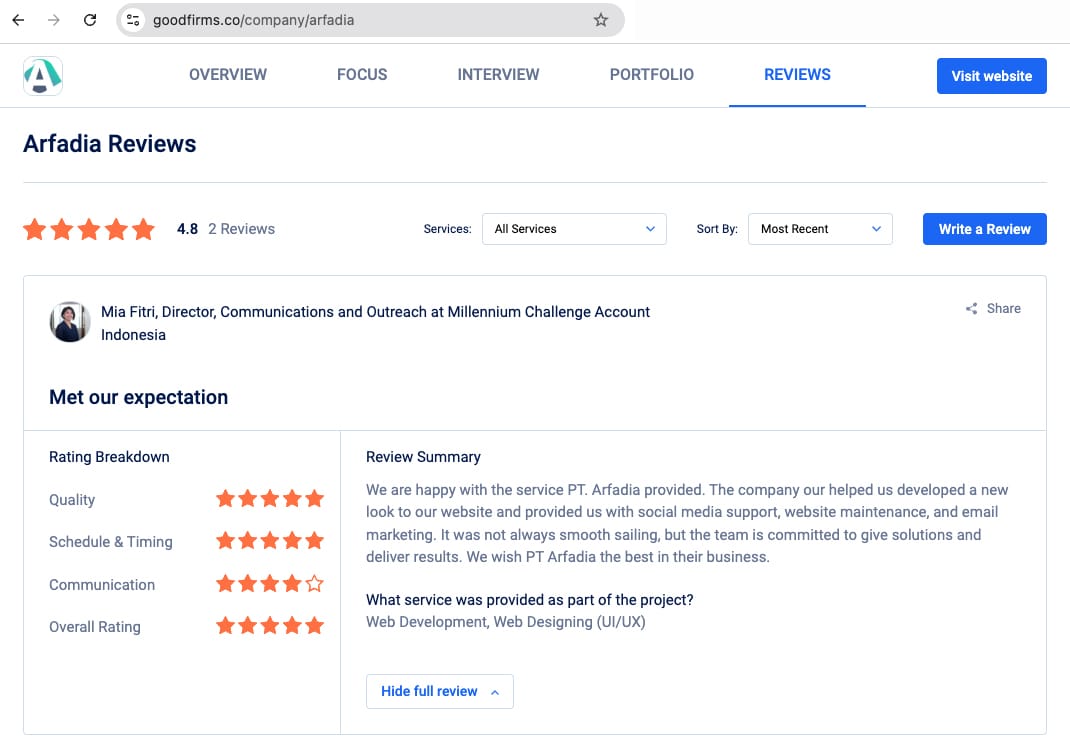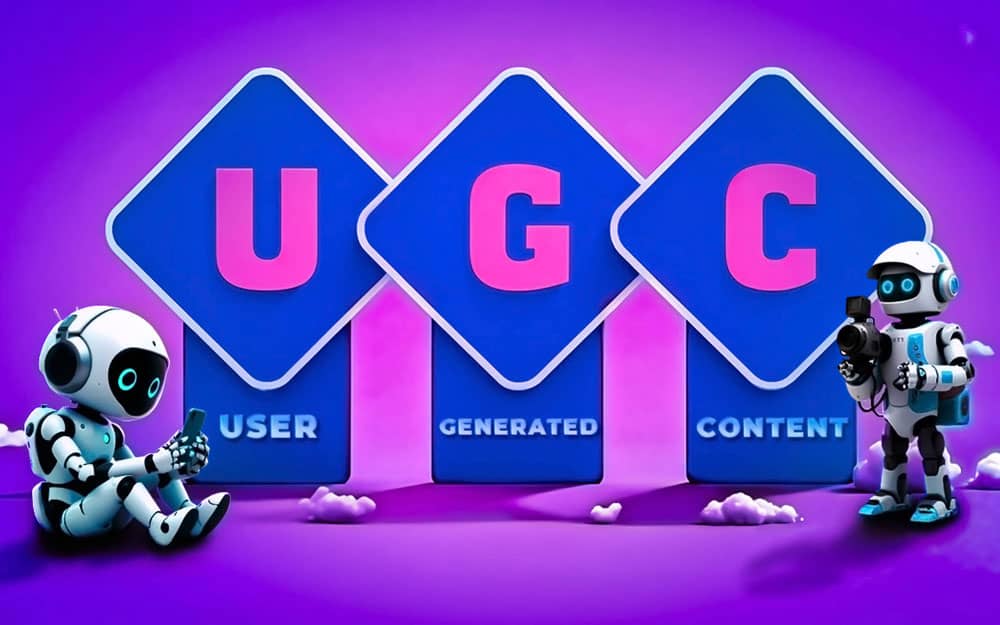Understanding the Importance of User-Generated Content
Introduction: What is the Importance of User-Generated Content?
User-generated content (UGC) has become a cornerstone of modern digital marketing, playing a critical role in how brands engage with their audiences. But what exactly is UGC, and why is it so important? In this blog post, we’ll dive deep into the concept of user-generated content, exploring its significance, how it differs from traditional content, and why it's vital for businesses looking to build trust, enhance customer engagement, and drive conversions.

Understanding User-Generated Content
What is User-Generated Content?
User-generated content (UGC) refers to any form of content—such as text, images, videos, reviews, or social media posts—that is created and shared by individuals, rather than the brand itself. UGC is typically unpaid and organic, produced by consumers or fans who engage with a brand or product. This type of content is shared on various platforms, including social media, review sites, blogs, and even within the brand's own channels.
Examples of User-Generated Content :
- Social Media Posts: Photos or videos posted by users on platforms like Instagram or Twitter, often featuring a product or service.
- Customer Reviews: Feedback left by customers on platforms like Amazon, Yelp, or Google Reviews.
- Testimonials: Written or video testimonials shared by satisfied customers on a brand’s website or social media channels.
- Blog Posts: Articles or posts written by customers or fans on their personal blogs, discussing their experience with a brand.
- Videos: User-created content on platforms like YouTube or TikTok, showcasing product use, unboxing, or tutorials.
The Evolution of UGC in the Digital Age
In the early days of the internet, user-generated content was relatively rare and mostly limited to reviews or forum posts. However, with the rise of social media and mobile technology, UGC has exploded, becoming a key driver of engagement and community building. Platforms like Instagram, YouTube, and TikTok have made it easier than ever for users to create and share content, giving brands new opportunities to connect with their audiences.
Different Types of UGC :
- Text-Based Content: Reviews, testimonials, blog posts.
- Visual Content: Photos, infographics, memes, illustrations.
- Video Content: Tutorials, unboxings, reviews, live streams.
- Interactive Content: Polls, quizzes, challenges.

How Does User-Generated Content Differ from Traditional Content?
User-generated content stands apart from traditional, brand-generated content in several key ways. The most significant differences lie in the source, authenticity, and consumer perception of the content. You must have a social media strategy in order to help with reaching your target audience with User-generated content.
Comparison Between UGC and Brand-Generated Content :
- Source: UGC is created by consumers or users, while traditional content is produced by the brand’s marketing team or an agency.
- Authenticity: UGC is often seen as more authentic and trustworthy because it reflects real experiences from real people, rather than polished marketing messages.
- Engagement: UGC tends to generate higher engagement because it resonates more with the audience as it feels personal and relatable.
The Role of Authenticity and Trust in UGC vs. Traditional Content
Consumers today are bombarded with advertisements and branded content, leading to a degree of skepticism. UGC cuts through this noise by offering genuine, peer-created content that others can relate to. This authenticity is why UGC is often perceived as more trustworthy, making it a powerful tool in influencing purchase decisions.
Examples Illustrating the Difference in Consumer Perception :
- Traditional Ad Campaign : A fashion brand might create a high-budget campaign featuring models wearing their latest collection. While visually stunning, this content might be seen as less relatable to the average consumer.
- UGC Campaign : In contrast, the same brand could encourage customers to share their own photos wearing the brand's clothes on social media. These images, featuring real people, can create a stronger emotional connection with potential buyers, as they see how the clothes look on individuals similar to themselves.
The Importance of User-Generated Content
Why is User-Generated Content Important for Brands?
User-generated content has become a crucial element in modern marketing strategies, and its importance continues to grow. Here’s why UGC is so valuable for brands:
- Boosts Brand Credibility and Trust: UGC adds a layer of authenticity that traditional marketing often lacks. When potential customers see real people using and endorsing a product, it builds trust. This trust is especially important in a market where consumers are increasingly sceptical of overtly promotional content. According to a Nielsen survey, 92% of consumers trust organic, user-generated content more than traditional advertising.
- Enhances Customer Engagement and Interaction: UGC invites consumers to participate in the brand narrative, making them feel more connected and valued. When brands encourage UGC, they’re not just promoting their products; they’re building a community. This sense of community fosters deeper engagement, as consumers feel like they are part of something larger than themselves. When users take a quiz created with a Quiz Maker Plugin, they’re more likely to share their results, sparking conversations and encouraging others to participate.
- Drives Purchase Decisions: User-generated content, particularly reviews and testimonials, plays a significant role in influencing purchase decisions. BrightLocal’s 2023 Local Consumer Review Survey found that 87% of consumers read online reviews before making a purchase. Positive UGC can reduce buyer hesitation, offering reassurance and validation from peers.
- Fosters a Sense of Community Around the Brand: UGC can help create a strong community around your brand. When users see their content featured on your website or social media channels, it strengthens their emotional connection to your brand. This connection can turn occasional buyers into loyal customers and even brand advocates.
Statistics Highlighting UGC’s Importance:
- 70% of consumers trust online peer reviews and recommendations.
- 48% of consumers say UGC is a great way to discover new products.
- 25% of search results for the world’s top 20 brands are links to user-generated content.
The Role of UGC in Social Proof
Social proof is a psychological phenomenon where people look to others’ actions to guide their own. In the context of marketing, social proof plays a critical role in influencing consumer behaviour. User-generated content is one of the most effective forms of social proof.
- What is Social Proof and Why It Matters: Social proof is the idea that people are more likely to do something if they see others doing it. In marketing, this translates to consumers being more likely to trust a product or service if they see that others have had positive experiences with it. Social proof can take many forms, including reviews, testimonials, social media mentions, and more.
- Examples of How UGC Serves as Social Proof:
- Customer Reviews: Seeing numerous positive reviews on a product page can reassure a potential buyer that the product is worth purchasing.
- Social Media Mentions: When customers share their experiences with a product on social media, it acts as an endorsement, encouraging others to try it as well.
- User Photos: Photos shared by real users, especially on platforms like Instagram, provide a visual form of social proof that can be incredibly persuasive.
- The Psychological Impact of Peer Recommendations on Consumer Behavior: When potential customers see that others—especially people they identify with—are using and enjoying a product, it significantly influences their own purchasing decisions. This peer influence can be more powerful than any brand-generated content because it feels more genuine and relatable.
Statistics on Social Proof and UGC:
- 79% of people say user-generated content highly impacts their purchasing decisions.
- 81% of consumers' purchasing decisions are influenced by social media posts from friends or family.
Types of User-Generated Content
Popular Forms of User-Generated Content
User-generated content can take many forms, each offering unique benefits for brands. Let’s explore some of the most popular types of UGC and how they can be leveraged in your marketing strategy.
Customer Reviews and Testimonials
Customer Reviews: Customer reviews are among the most influential types of UGC. They provide authentic feedback from real users, helping other potential customers make informed decisions. Reviews can be found on e-commerce sites, third-party review platforms like Yelp or Google Reviews, and even on social media.
Why Customer Reviews Matter:
- Trust Building: Reviews from real users are often perceived as more trustworthy than brand-generated content. According to a survey by Podium, 93% of consumers say online reviews impact their purchasing decisions.
- SEO Benefits: Reviews add fresh content to your site, helping with SEO. Additionally, they often include relevant keywords that can improve your search rankings.

Testimonials: Testimonials are similar to reviews but are often more detailed and may be solicited by the brand. These can be fe atured on a company’s website, in marketing materials, or across social media channels. Testimonials are powerful because they highlight specific benefits or features of a product, often from a satisfied customer.
Best Practices for Utilizing User-Generated Content
Legal Considerations and Best Practices
While user-generated content can be a valuable asset, it’s important to handle it responsibly and legally. Here are some best practices to keep in mind:
- Obtain Permission Before Using UGC: Always seek permission from the content creator before using their content in your marketing materials. This can be as simple as asking for their consent in the comments section or through a direct message. Obtaining explicit permission helps avoid any potential legal issues and shows respect for the creator's work.
- Give Proper Credit to the Original Creator: When using UGC, always give credit to the original creator. This can be done by tagging them in your social media posts or including a byline in blog posts. Proper attribution not only acknowledges the creator’s efforts but also encourages others to share their content.
- Understand and Comply with Platform Policies: Different platforms have their own rules and regulations regarding the use of UGC. Make sure you’re familiar with these policies to avoid any violations. For example, some platforms may have restrictions on using user-generated content for commercial purposes.
- Maintain Consistent Brand Messaging: While UGC is typically more authentic and less polished than brand-generated content, it’s important to ensure that it aligns with your brand’s messaging and values. Choose content that reflects your brand’s identity and resonates with your target audience.
- Monitor and Moderate UGC: Keep an eye on the UGC that is associated with your brand to ensure it’s appropriate and aligns with your brand image. Set up moderation processes to review content before it’s shared on your platforms, especially in campaigns or contests.
Measuring the Impact of User-Generated Content
How to Track and Measure UGC Success
To understand the true impact of user-generated content on your brand, it’s essential to track and measure its effectiveness. Here’s how you can do it:
- Engagement Metrics: Track the engagement levels of UGC, such as likes, shares, comments, and retweets. High engagement rates often indicate that the content resonates well with your audience.
- Conversion Rates: Measure the conversion rates associated with UGC. This includes tracking how many users who interact with UGC end up making a purchase or signing up for a service. UGC often leads to higher conversion rates due to its authenticity and social proof.
- Traffic and SEO Performance: Monitor your website’s traffic and SEO performance in relation to UGC. Analyze whether UGC, such as customer reviews or blog posts, is driving more organic traffic to your site. Tools like Google Analytics can help track these metrics.
- Sentiment Analysis: Conduct sentiment analysis to gauge the overall sentiment of UGC. This involves analyzing the tone and emotion conveyed in user-generated content, such as whether the feedback is positive, negative, or neutral.
- Content Reach and Virality: Assess the reach and virality of UGC by tracking how far and wide the content is shared. Viral UGC can significantly boost brand awareness and reach a larger audience.
Tools to Measure UGC:
- Google Analytics: For tracking traffic and conversion rates.
- Hootsuite/Buffer: For monitoring social media engagement.
- BuzzSumo: To track content reach and virality.
- Mention: For sentiment analysis and tracking brand mentions.
Conclusion: Harnessing the Power of User-Generated Content
Final Thoughts on the Importance of User-Generated Content
User-generated content has become an indispensable part of modern marketing. Its ability to build trust, foster community, enhance engagement, and drive conversions makes it a powerful tool for brands of all sizes. By understanding the importance of UGC and implementing strategies to encourage it, you can tap into a wealth of authentic content that not only resonates with your audience but also enhances your brand’s credibility and reach.
As consumers increasingly seek out genuine experiences and peer recommendations, brands that successfully leverage UGC will be better positioned to stand out in a crowded marketplace. Whether through customer reviews, social media posts, videos, or blog contributions, UGC provides a unique opportunity to connect with your audience in a meaningful way.
So, embrace the power of user-generated content, and let your customers be your brand’s most influential advocates.
FAQ
1. What is User-Generated Content (UGC)?
Answer:
User-Generated Content (UGC) refers to any form of content—such as images, videos, text, reviews, or social media posts—that is created and shared by users or customers rather than the brand itself. This content is typically shared on social media platforms, review sites, or directly on the brand’s website. UGC is valuable because it offers authentic, real-world insights and experiences with a product or service, often serving as social proof that can influence potential customers' purchasing decisions.
2. How Does User-Generated Content Benefit My Brand?
Answer:
User-Generated Content benefits your brand in several ways:
- Builds Trust and Credibility: UGC is perceived as more authentic and trustworthy compared to traditional advertising because it comes from real customers sharing their genuine experiences.
- Enhances Engagement: UGC encourages more interaction and engagement with your brand, as users are more likely to engage with content created by their peers.
- Boosts SEO: Content like customer reviews and blog posts contribute fresh content to your site, improving its search engine ranking.
- Cost-Effective Marketing: UGC provides free content that can be used across various marketing channels, reducing the need for expensive content creation.
3. How Can I Encourage More User-Generated Content?
Answer:
Encouraging User-Generated Content can be achieved through several strategies:
- Create a Branded Hashtag: Promote a unique hashtag that users can include in their social media posts related to your brand. This helps in tracking and sharing UGC.
- Run Contests and Giveaways: Organize contests where participants are required to submit content, such as photos or videos, featuring your product, with the chance to win prizes.
- Feature User Content: Regularly feature UGC on your brand’s social media accounts or website. This recognition encourages others to create and share their content as well.
- Offer Incentives: Provide rewards like discounts or special offers for users who contribute content, such as leaving a review or posting a photo with your product.
